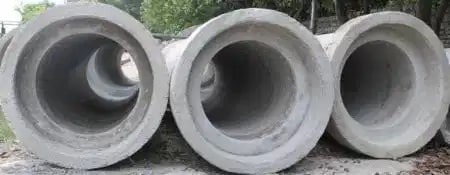In the modern era, many new advanced technologies came into existence for ease of work and aesthetic purpose. The false ceiling is used in both residential and commercial buildings for aesthetic purposes.
What is False Ceiling?
As the name suggests, it is a secondary ceiling (not a real ceiling).
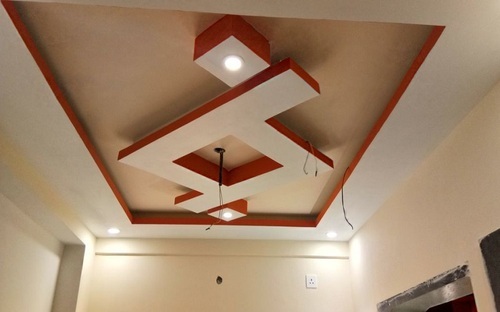
It is installed below the primary ceiling by different kinds of materials. It provides a smooth and beautiful surface finish on the ceiling. Different types of paints are applied on the ceiling surface to make it attractive.
In a particular situation, some electrical, HVAC and plumbing works have to be done on the ceiling surface, and it seems very unpleasant. So to hide those things, false ceilings are provided below the primary ceiling. It is also known as the dropped ceiling.
Generally, these secondary ceilings are backed by a steel or wooden frames with 150 mm to 600 mm height below from the roof ceiling.
Components of False ceiling
The false ceiling board hung at a certain height from the ceiling with appropriate support.
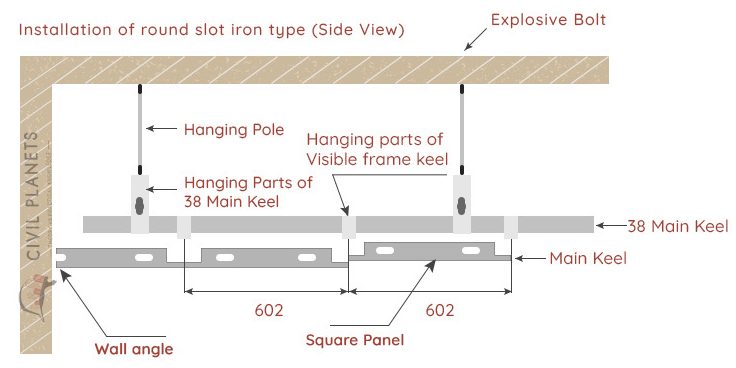
Classifications Based on Materials
The usage of materials and methods has classified the false ceiling.
- Gypsum Board Ceiling
- Grid Ceiling
- Plaster Of Paris (POP) Ceiling
- Plywood Ceiling
- PVC ceiling
- Fibre ceiling
- Synthetic ceiling
Gypsum Board Ceiling
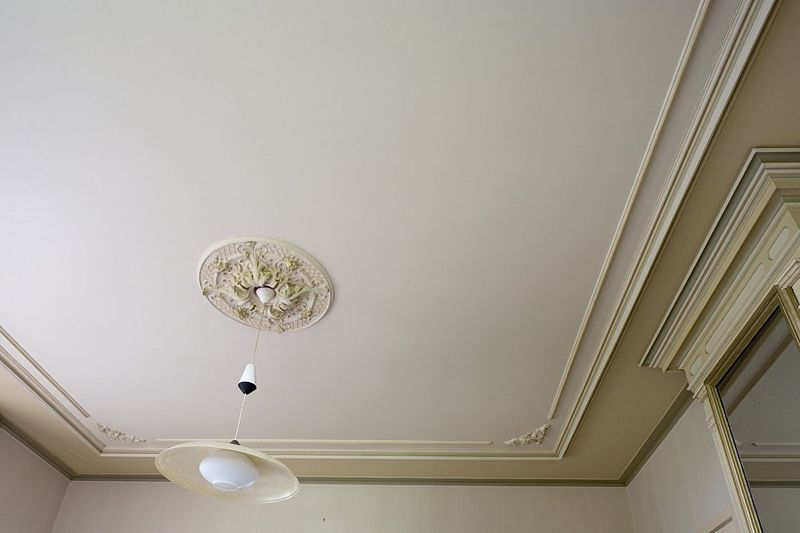
Gypsum board is made of calcium sulfate dihydrate, which is used as both for interior walls and ceilings.
It is very light in weight and widely used in buildings. It is manufactured in the shape of a square or rectangular and can resist the load 15Kg/Sqm to 18 Kg/Sqm. The gypsum boards are installed over the wooden or steel frame at a certain height from the ceiling.
Types of Gypsum Boards Available in Market
- Regular Gypsum Board – Used for small scale residential and commercial buildings.
- Fire Resistant Gypsum Board – It is used in an area where high-level fire resistance is required.
- Moisture Resistant Gypsum Board – It is used as a dry partition wall or ceiling in a dampness area to resist moisture occurrence.
- Fire and moisture resistant gypsum board – It is used where both moisture and fire resistance are required.
Grid False Ceiling
The false grid ceilings are economical and used for commercial buildings. The shape of the tile used in grid ceilings that are either square or rectangular. It is available in different sizes 600mm x 600mm and 300mm x 600mm.
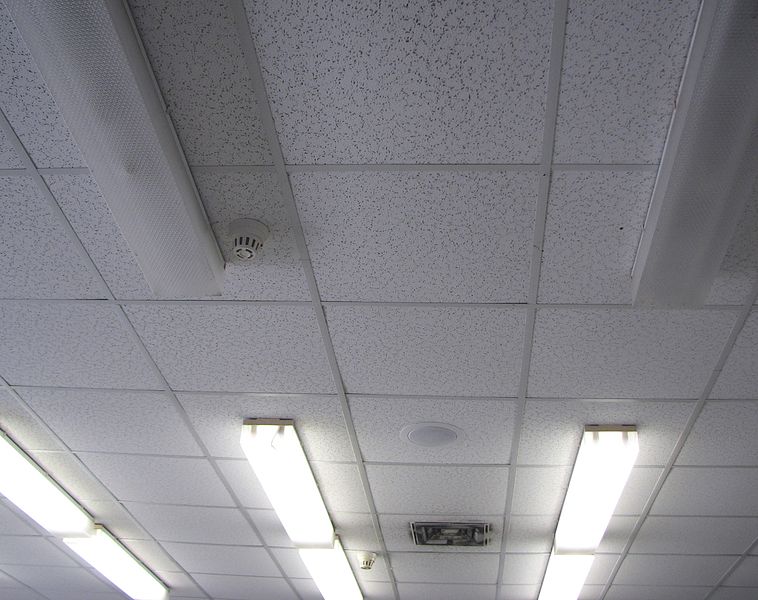
In commercial buildings, many electrical wires and plumbing pipes are laid over the ceiling, which will affect the buildings’ attractiveness. So to conceal it and to access easily in case of maintenance, grid false ceilings are provided.
It can be removed and replaced anytime without any special equipment.
Plaster Of Paris (POP) Ceiling
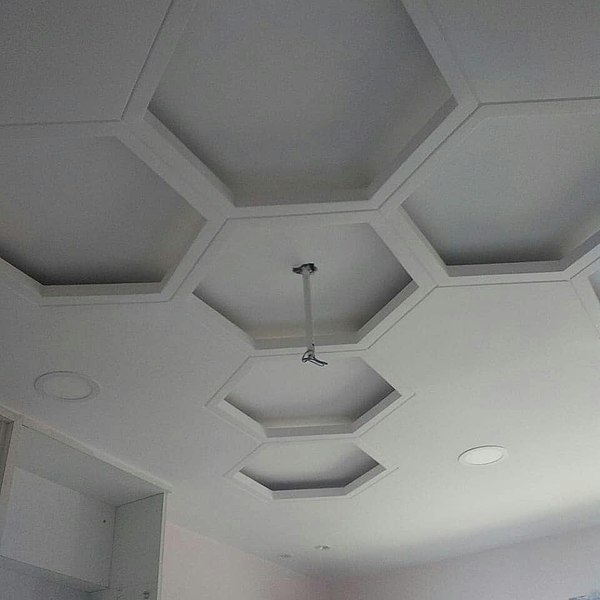
Highly skilled workers required for POP false ceiling to make the ceilings look aesthetically. The cost of POP is very cheap compared to other types of false ceiling.
It (POP) can be mixed with the water and directly applied over the fibreboard or wooden board that hung from the RCC roof.
Plywood Ceiling
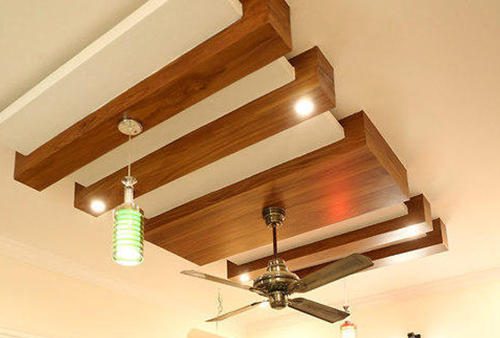
The plywood ceilings are used in residential buildings located in cold climates. Making and installing a plywood ceiling is simple, but at the same time, it will take a high cost for maintenance.
The main disadvantage of a plywood ceiling is there is a chance for the wood to get a fungal or termite attack. So proper anti-termite treatment is required to enhance the lifetime of ceilings.
PVC False Ceiling
The PVC false ceilings are widely used in commercial buildings that give long life. The making, installation, and maintenance of PVC false ceiling is too low.
It gives a pleasant appearance and provides resistance against moisture.
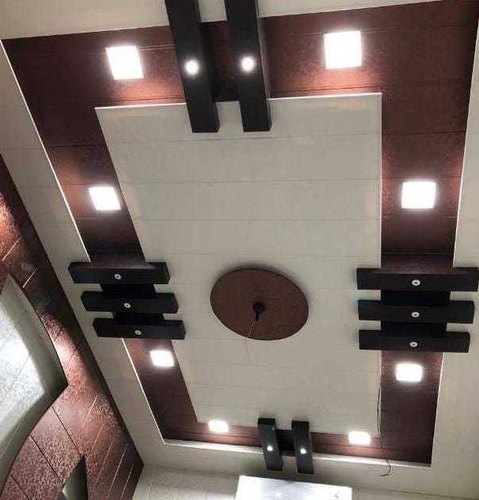
Fibre False Ceiling
The false fibre ceilings are easy to install. Used on both residential and commercial buildings and the manufacturing cost is low.
It is used in commercial buildings to conceal the electrical and plumbing line.
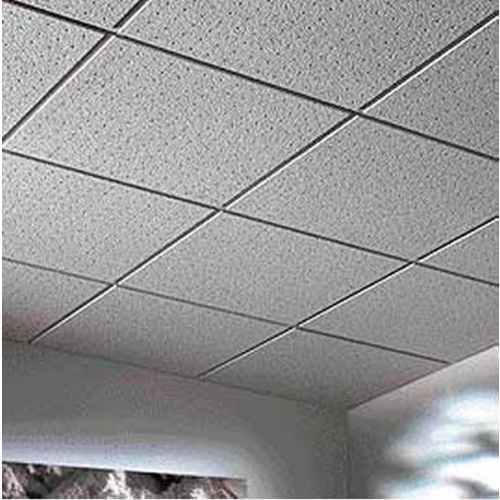
Glass Ceiling
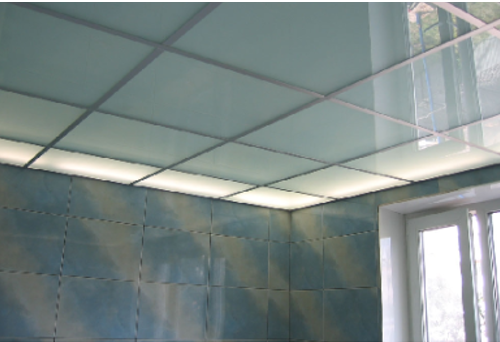
Glass false ceiling is the expensive type used in commercial buildings, giving a smooth, excellent appearance to the roof.
It is an excellent thermal insulator, but the glass used for the false ceiling should be sustainable against the load.
Advantages of False Ceiling
- It reduces the external sound noisiness.
- It provides a smooth and beautiful appearance.
- It can be used for both residential and commercial buildings.
- It reduces the AC consumption due to its excellent insulation capacity.
- Electrical and plumbing conduits can run below the ceiling, and the false ceiling covers those.
- The false ceiling acts as an excellent thermal insulator, which significantly reduces the temperature inside the room. It resists the heated air molecules from the RCC roof entering the room.
Disadvantages of False Ceiling
- It may fall due to improper installation.
- Highly skilled manpower required for installation and maintainance.
- Pests may attack it. So a sufficient pest control system must be enabled.
- It reduces the height between the floor and ceiling, and sometimes it seems very annoying.
Happy Learning 🙂

